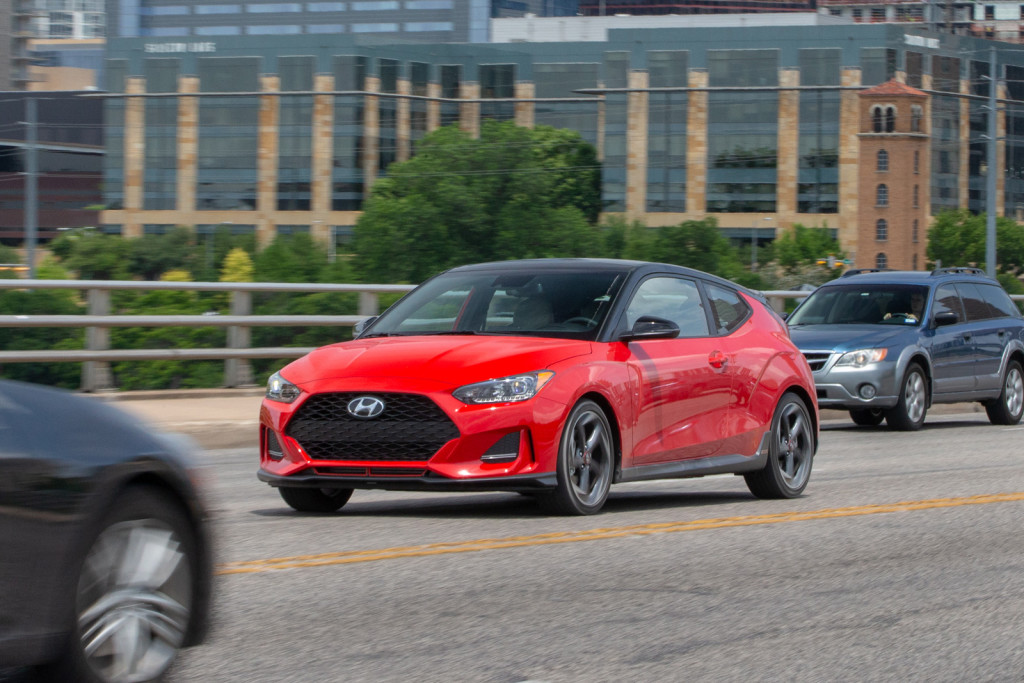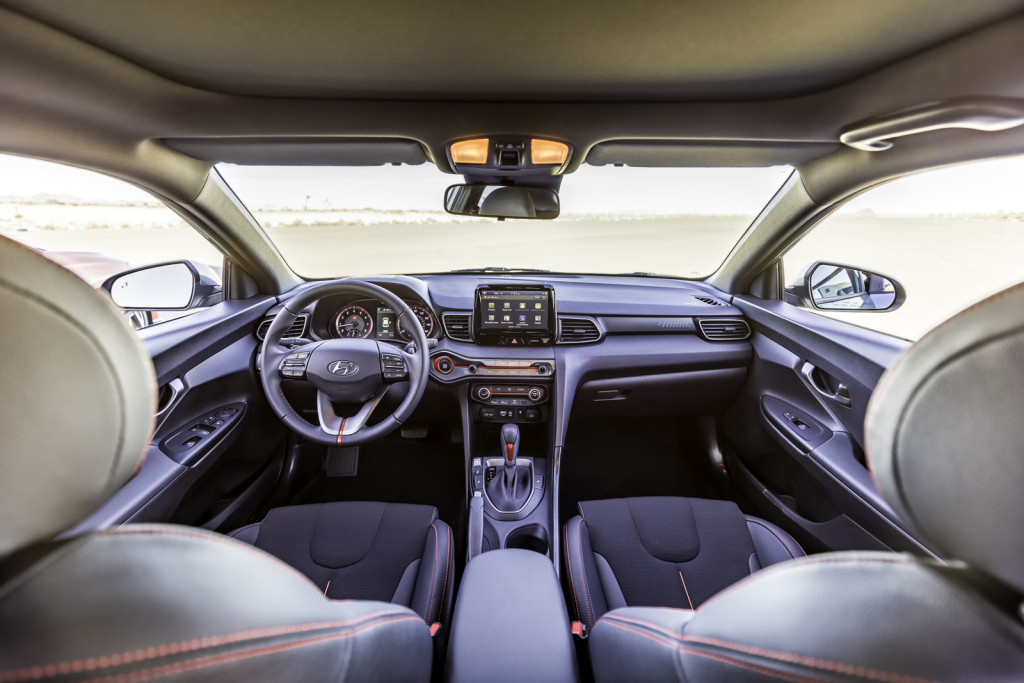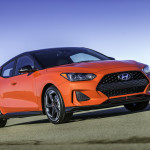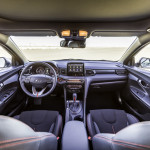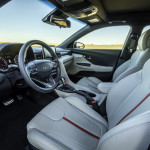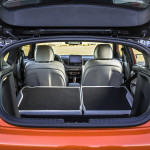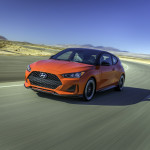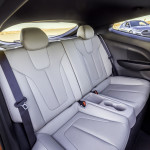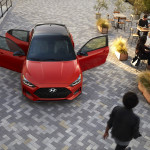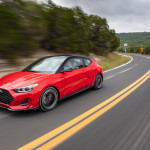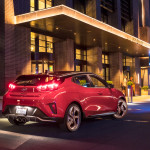The first Hyundai Veloster I had a chance to spend time with was a good week. The hot little hatchback with the funny name and the weird door added a much needed turbo charged engine for 2019, and last year I had a week with that speedy little beauty and still liked it.
That’s why I’m glad that for 2020, Hyundai didn’t make any major changes, only a few minor tweaks.
They are:
-Manual transmission no longer available on Turbo Ultimate trim level
-Manual transmission remains standard on Turbo R-Spec model
-Blind-Spot Collision Warning with Rear Cross Traffic Warning now standard on Turbo R-Spec
-Wireless device charging now standard on Turbo and Turbo Ultimate models
-Cargo area tie-down hooks now standard on all models
-Front grille, front and rear fascia accents and side skirts now gloss black, replacing flat black
They sent me a 2020 model for a recent week, and there was nothing to change my mind about the hot little hatchback with the funny name.
The addition of the turbo in 2019 was, in my humble opinion, a game changer. The 2014 non-turbo model was okay, but just. The addition of the turbocharged 1.6-liter inline-four gave the Veloster the extra little pep it needed. And as part of the 2019 redesign they kept the door. You see the Veloster isn’t a two-door hatchback; thanks to single driver-side door and two passenger-side doors getting backseat passengers in and out doesn’t require yoga lessons.
There was also a redesign of the exterior with a new asymmetrical design that carries over to the interior. The new design makes it look less boxy and indeed more asymmetrical. The lines now look a bit racier.
The new interior added more cargo room, 19.9 cubic feet behind the back seats which is more than the Mini Cooper, Mini Clubman and VW Beetle. Something I felt was sorely needed. That new interior also gained headroom and room overall. It’s still a small hatchback, but it just doesn’t feel as small.
There are five trims; base, which has a 2.0-liter engine, the 2.0 Premium, Turbo R-Spec, Turbo and Turbo Ultimate.
Under the hood the 2.0 variants get a 2.0-liter inline-four (147 hp, 132 lb-ft) while the Turbo models get a turbocharged 1.6-liter inline-four (201 hp, 195 lb-ft). A six-speed manual transmission as standard, but a six-speed automatic can be optioned in. All the lineup gets standard features like a forward collision mitigation system, lane keeping assist and a rearview camera. The 7-inch infotainment system features standard Apple CarPlay and Android Auto connectivity, Bluetooth, two USB ports and a six-speaker sound system.
The Premium lineup adds a blind-spot monitoring with rear cross-traffic alert; along with standard luxury equipment that includes a sunroof, automatic climate control, heated front seats, and a proximity entry system with push-button start. The infotainment system gets a boost as well thanks to an 8-inch display, Hyundai’s Blue Link connected services, a standard wireless charging pad, and an eight-speaker Infinity audio system with satellite radio.
The Premium models ride are on 18-inch shoes as opposed to the 17-inch on the 2.0 models.
The R-Spec can only have the manual transmission and has a sport-tuned suspension; the Turbo Ultimate which I had for the week, again, had a seven-speed dual-clutch automatic transmission and special interior trim.
On the road the Veloster isn’t a throw you back in the seat sports car. But with the 1.6 turbo and the seven-speed dual-clutch automatic dialed into Sport mode, it sure is a lot of fun. With the new look, more room inside and the good in-car technology this capable little hatchback is a definite player alongside the Civic and Forte.
That story doesn’t change for 2020, and that’s a very good thing indeed.
The 2020 Hyundai Veloster Turbo Ultimate
MSRP: $28,150
MSRP (as tested): $29,215
Engine: 1.6 liter turbocharged: 201 hp @ 6000 rpm, 195 ft-lbs. torque @ 1500 rpm
Transmission: 7-speed duel clutch shiftable automatic
Fuel Mileage (EPA): 29 city, 34 highway, 30 combined
Fuel Mileage (as tested, mixed conditions): 32 mpg
Base Curb Weight: 2987 lbs.
Cargo Area Dimensions
Cargo Volume with Rear Seat Up: ft³ 19.9
Cargo Volume with Rear Seat Down: ft³ 44.5
Interior Dimensions
Passenger Capacity: 4
Passenger Volume: ft³ 89.9
Front Head Room: in 36.9
Front Leg Room: in 42.6
Front Shoulder Room: in 56
Front Hip Room: in 54.1
Second Head Room: in 35.9
Second Leg Room: in 34.1
Second Shoulder Room: in 54.3
Second Hip Room: in 46.5
Exterior Dimensions
Wheelbase: in 104.3
Length, Overall: in 166.9
Width, Max w/o mirrors: in 70.9
Height, Overall: in 55.1
Track Width, Front: in 61
Track Width, Rear: in 61.5
Min Ground Clearance: in 5.6
Warranty
Basic: 5 Years/60,000 Miles
Drivetrain: 10 Years/100,000 Miles
Corrosion: 7 Years/Unlimited Miles
Roadside Assistance: 5 Years/Unlimited Miles
- (Hyundai)
- (Hyundai)
- (Hyundai)
- (Hyundai)
- (Hyundai)
- (Hyundai)
- (Hyundai)
- (Hyundai)
- (Hyundai)
- (Hyundai)
- (Hyundai)
- (Hyundai)
